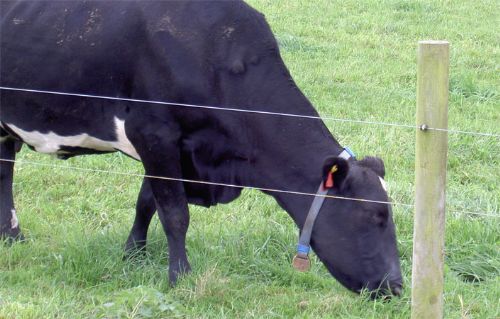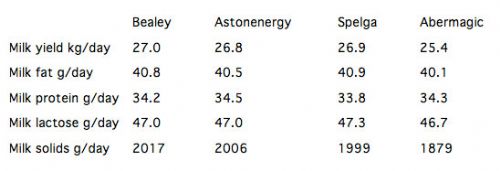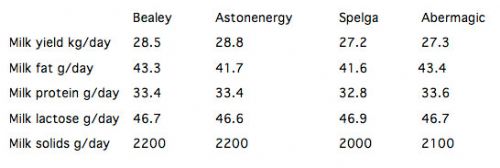
The importance of grass variety selection on animal performance - specifically milk production - has been put under the spotlight by the Animal & Grassland Research and Innovation Centre at Moorepark, near Cork. The results to-date have been revealing.
Barenbrug’s agricultural product manager David Long considers the findings and implications for livestock producers and grass breeders.
’Selecting the correct grass variety is widely accepted as being of major importance because of its potential influence on both animal and sward productivity."
"However the majority of grass-testing protocols test the performance of pure varieties in small plots, under either simulated grazing or conservation-based protocols. Regrettably this provides little or no indication on how the variety will influence animal performance. Consequently Moorepark took the important step of conducting a trial*, which would examine the effects of four perennial ryegrass varieties on the milk production of spring-calving Holstein Friesian dairy cows during the early summer period.

The four intermediate-heading perennial ryegrass varieties tested were two diploids; Spelga, bred by AFBI, and AberMagic, from IBERS; and the tetraploid varieties Bealey, bred by Agriseeds in New Zealand, and Astonenergy, from Eurograss. Both Bealey and Spelga are marketed by Barenbrug.
The dairy cows were grazed on 3.8 hectare plots of a pure sward of each variety for 17 days. The cows were allowed to acclimatise for the first 10 days, then the remaining seven days were used to measure daily milk yield and milk composition.
The plots were managed to give the cows a daily herbage allowance of 17kg DM/cow/day and the leaf, stem and dead proportion of the sward was also measured.

First year results are shown above.
From these results it became obvious that cows grazing AberMagic had lower milk yields and lower milk-solid yields than those grazing the other cultivars. Analysis of the sward showed that AberMagic had a higher proportion of stem in the sward and this reduction in the digestibility of the sward in turn leads to a reduction in daily milk yields.
Second year results are shown above.
In the second year the two diploid varieties, AberMagic and Spelga, had a significantly higher proportion of dead and stemmy grass than Astonenergy, which again was reflected in the milk yield and quality.
Bealey had a similar structure to the diploid varieties, but has proved to be a highly palatable variety. What’s more, the proportion of stem in its sward has not affected yield, as the cows will eat it, including the stems.
There are several conclusions that can be drawn from these very interesting trials for both livestock producers and commercial grass breeders.
First of all, variety selection can influence milk production and this cannot be predicted from just cutting trials.
Avoid grazing varieties like AberMagic that have a relatively high proportion of stem within the sward. Spelga is a relatively old variety, having been first recommended in 1995, and since then newer AFBI varieties have bred very strongly against stemmy growth in the sward. So modern varieties like Drumbo and Tyrella do not suffer from this problem and are proven to be well-grazed by dairy cows.
Overall the tetraploid varieties have performed consistently well. Modern tetraploid varieties, like Malone and Dunluce, combine high-energy content with exceptionally high yields, excellent digestibility and good sward characteristics, being relatively dense and free from stemmy regrowth.
Bealey, which was bred in New Zealand, has an extremely open growth habit and most farmers seeing the sward after the cows had finished grazing would be appalled. However it is an extremely palatable variety - a characteristic that cannot be measured in either cutting trials or in the lab. Grazing trials, where the animal is allowed to select what it eats is an important part of breeding. All Barenbrug varieties are subject to this type of ’cafeteria’ trial and these have already fully illustrated how varieties such as Dunloy, score highly on the palatability chart.
The proportion of tetraploid varieties in a ley is usually around 35 percent but, with new, good varieties, it may be time to re-examine this. We believe it could be time to increase the percentage of palatable perennial ryegrasses and take notice of what the cows are telling us.’
